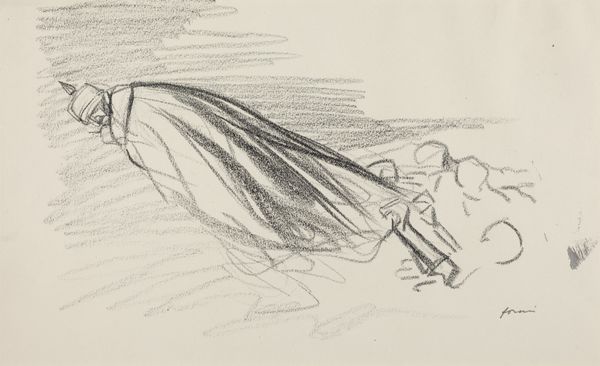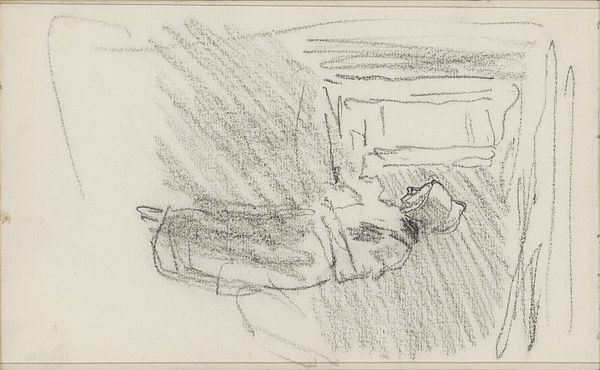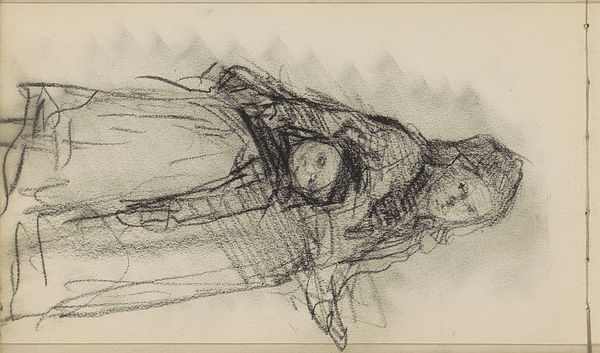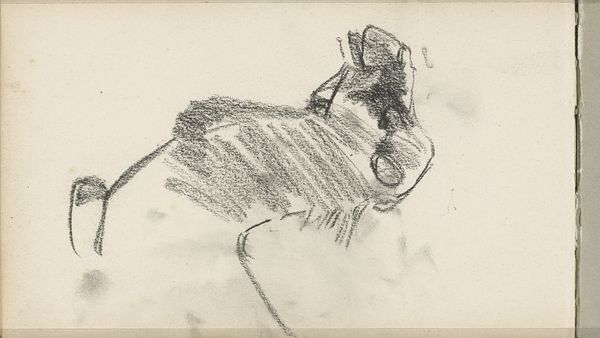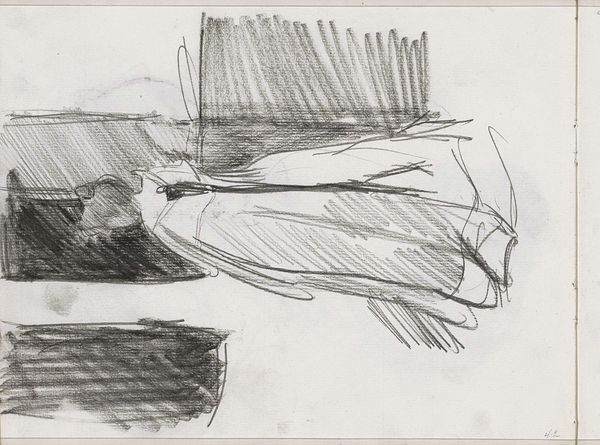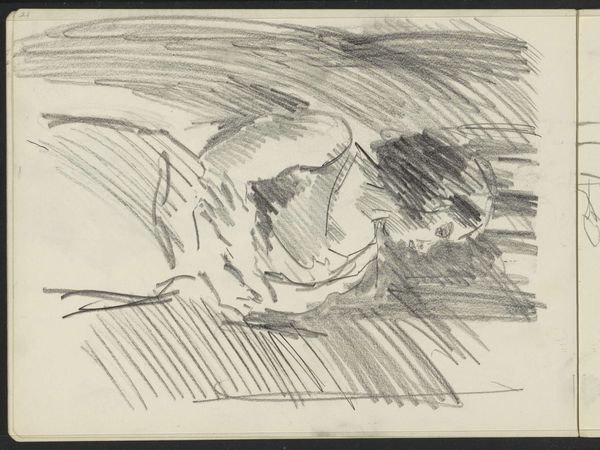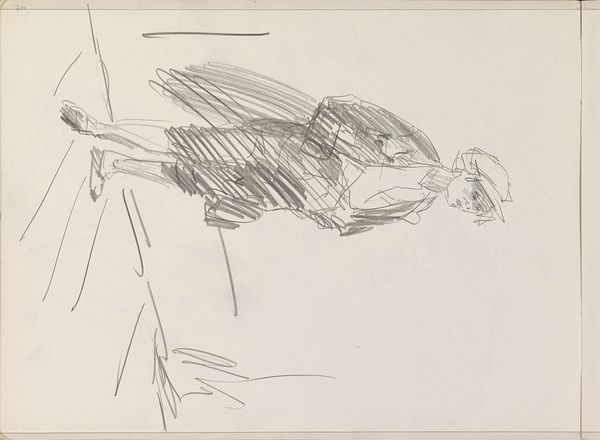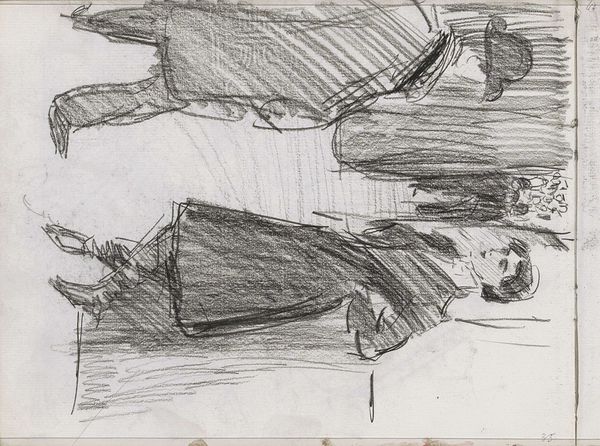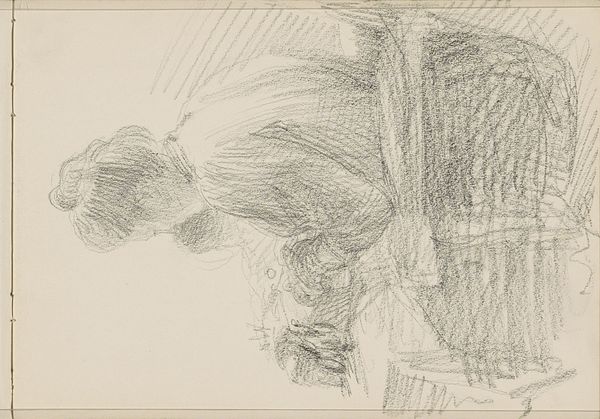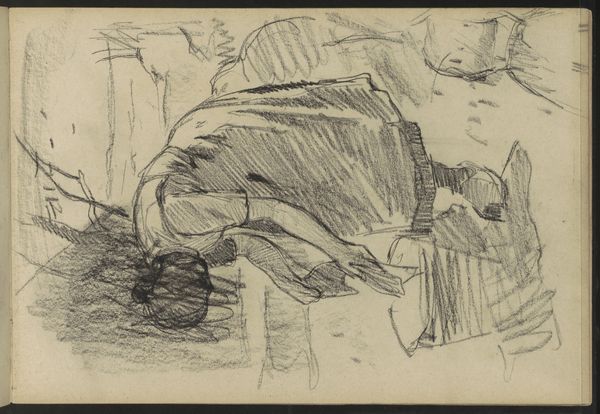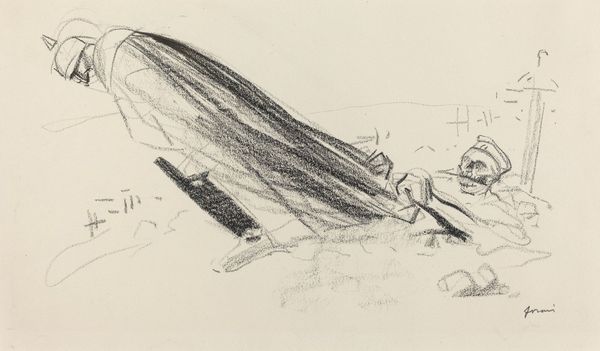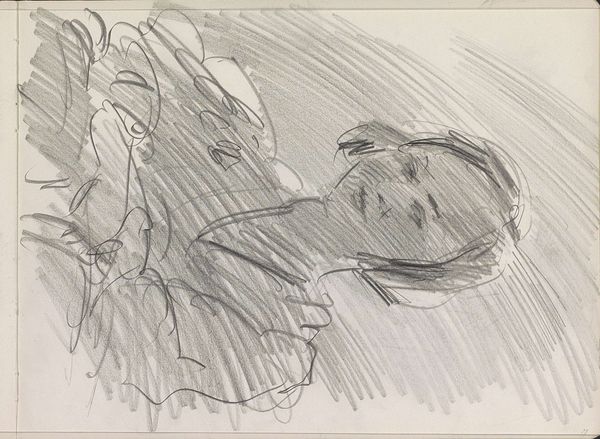
Ceux de la premiere heure. "Sire! ou en somme-nous de "la guerre fraiche et joyeuse"? ..." c. 1914 - 1919
0:00
0:00
drawing, graphite
#
portrait
#
drawing
#
narrative-art
#
expressionism
#
graphite
Dimensions: overall: 33 x 50.3 cm (13 x 19 13/16 in.)
Copyright: National Gallery of Art: CC0 1.0
Curator: There’s a raw vulnerability in this piece; it feels less like observation and more like direct emotional bleed. Editor: Indeed. This is "Ceux de la premiere heure..." by Jean-Louis Forain, likely created between 1914 and 1919. Forain captured the mood of France during World War I through drawings such as this, rendered primarily in graphite. The title translates to “Those of the First Hour...”, followed by a cynical question to the king about the "fresh and joyous war". It's an unsettling contrast, isn't it? Curator: The title casts a heavy shadow, revealing that cynicism as a shell for grief, an echo of propaganda perhaps. What stands out is this almost skeletal rendering of a figure. We seem to be inside their haunted posture, not just witnessing it. Are those ghosts behind him? Editor: Possibly spectres conjured up by the weight of conflict. Those shapes in the background certainly convey an intangible, spectral quality, underscoring a collective trauma experienced during the war. Consider the use of graphite, its immediacy allows a rawness absent from oil painting, thus echoing the conditions during that era. The quick strokes feel appropriate given the situation. Curator: Exactly. It mirrors a mind trying to process the unprocessable. The ambiguity invites personal projection; we are all meant to find ourselves, and the losses we know, in that slouching posture. The simplicity of the materials intensifies the message, a rejection of formality in favor of bare honesty. There are many conflicts visually here: What we hope for against reality. Editor: And by showing, rather than telling, Forain offers the viewer space to confront this history. Its placement within a museum setting today does raise the interesting, slightly troubling question of how we, as a society, memorialize war through art. What purposes do we really expect Forain's art to fulfil so many years after World War I? Curator: A difficult yet necessary question. This isn't just documentation; it's an evocation of feeling, a reminder that beneath grand narratives of history lie deeply personal experiences of loss, trauma, and, perhaps most tragically, disillusioned hope. Editor: Precisely. It leaves one pondering the eternal relevance of war and art. Thank you.
Comments
No comments
Be the first to comment and join the conversation on the ultimate creative platform.
